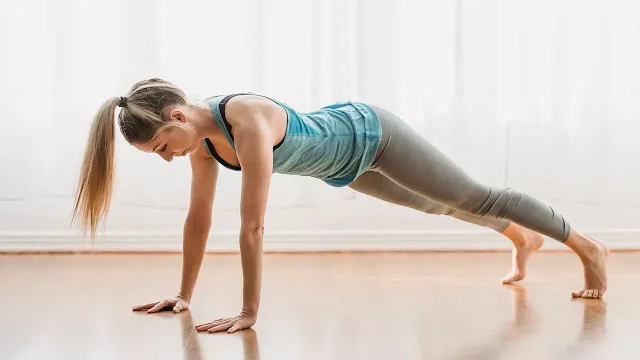How to Stay Fit and Healthy at Home
Staying fit and healthy is important for your physical and mental well-being, especially during these challenging times.
However, many people need help to exercise regularly and eat well when they are stuck at home.
In this article, we will share some tips and tricks on how to stay fit and healthy at home, without spending too much money or time.
Set a Routine and Stick to It
One of the best ways to stay fit and healthy at home is to set a routine and stick to it.
Having a regular schedule can help you stay motivated, organized, and focused on your goals.
For example, you can decide to wake up at a certain time, do some stretching or yoga, have a healthy breakfast, work or study for a few hours, take a break, do some cardio or strength training, have a balanced lunch, work or study some more, relax, have a light dinner, and go to bed early.
Of course, you can adjust your routine according to your preferences and needs but try to keep it consistent and realistic.
Use What You Have
You don't need to buy expensive equipment or join a gym to stay fit and healthy at home.
You can use what you have around you to create your own workouts and exercises.
For example, you can use:
- Chairs, tables, sofas, or beds for dips, push-ups, squats, lunges, or planks
- Water bottles, cans, books, or bags for weights or resistance
- Stairs, hallways, or balconies for running, jumping, or skipping
- Towels, belts, or ropes for stretching or flexibility
- Music, videos, or apps for guidance or inspiration
Some online resources and tutorials can show you how to use these items for your fitness.
You can also get creative and improvise with whatever you have.
Eat Well and Drink Plenty of Water
Staying fit and healthy at home is about exercising, eating well, and drinking plenty of water.
Eating well means choosing nutritious and balanced meals that provide you with enough energy and nutrients for your daily activities.
Some general tips for eating well are:
- Consume a diverse range of foods encompassing various food groups, including fruits, vegetables, grains, protein, and dairy.
- Avoid or limit processed, fried, or sugary foods and drinks, such as chips, cookies, soda, or candy
- Choose healthy snacks, such as nuts, seeds, yogurt, or fruit, instead of junk food
- Control your portion sizes and avoid overeating or skipping meals
- Plan your meals ahead and cook at home as much as possible
Drinking plenty of water is also essential for staying fit and healthy at home.
Water helps you stay hydrated, regulate your body temperature, flush out toxins, and prevent headaches, fatigue, or constipation.
Some general tips for drinking water are:
- Hydrate by consuming a minimum of eight glasses of water daily, and increase your intake if you engage in physical activity or experience significant perspiration.
- Drink water before, during, and after your workouts to replenish your fluids and electrolytes
- Drink water before and between your meals to help you feel full and digest better
- Drink water instead of sugary or alcoholic drinks, such as juice, soda, or beer
- Add some lemon, cucumber, mint, or berries to your water to make it more refreshing and flavorful
Conclusion
Staying fit and healthy at home is possible and beneficial for your physical and mental well-being.
By following these tips and tricks, you can create your own routine, use what you have, eat well, and drink plenty of water.
Remember that staying fit and healthy at home is not a one-time thing, but a lifestyle choice that requires commitment and consistency.
You can do it!
FAQs
Q: How much exercise do I need to stay fit and healthy at home?
A: The World Health Organization (WHO) recommends that adults aged 18-64 do at least 150 minutes of moderate-intensity or 75 minutes of vigorous-intensity physical activity per week, or a combination of both.
You can also do muscle-strengthening activities involving major muscle groups 2 or more days per week.
Q: What are some examples of moderate-intensity and vigorous-intensity physical activities?
A: Moderate-intensity physical activities are those that make you breathe faster and feel warmer, but not too hard.
Some examples are brisk walking, cycling, dancing, or gardening.
Vigorous-intensity physical activities are those that make you breathe hard and fast and make your heart beat faster.
Some examples are running, jumping, skipping, or playing sports.
Q: How can I stay motivated and accountable for staying fit and healthy at home?
A: There are many ways to stay motivated and accountable for staying fit and healthy at home.
Some of them are:
Set specific, measurable, achievable, realistic, and time-bound (SMART) goals and track your progress
Reward yourself for reaching your goals or milestones, such as buying a new outfit, watching a movie, or having a cheat meal
Find a workout buddy or join an online community that can support you and challenge you
Mix up your workouts and try new things to keep it fun and interesting
Remind yourself of the benefits and reasons why you want to stay fit and healthy at home

